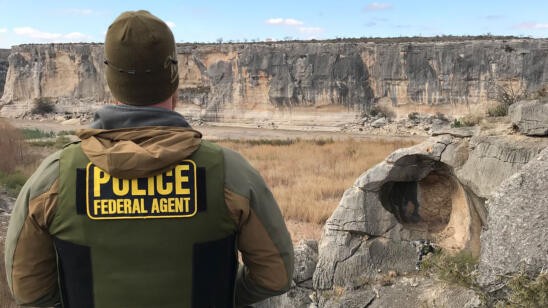Stalking consists of repeated contact between a person and another person, their victim, that results in fear or emotional distress. Many people have experienced stalking, but the exact numbers are unclear, in part because stalking is an underreported crime. A February 2022 report from the United States Department of Justice stated that around 3.4 million people above the age of 16 were stalking victims in the U.S. in 2019. An April 2022 report from the Centers for Disease Control, based on figures from 2016/7, shared that about 13.5 million people were stalked in a 12-month period.
In the past, a stalker might physically follow a victim, or repeatedly show up at their home, but technology has changed that. According to the Department of Justice report, 80 percent of stalking victims experienced stalking with technology, which is also known as cyberstalking. Cyberstalking may be combined with “traditional” stalking, or it can be the only form of stalking a victim endures.
Many cyberstalking victims feel they have little recourse. Changes in legislation, law enforcement training and additional support could better aid these victims.
Laws Against Cyberstalking Vary in the United States
The most common forms of cyberstalking include: unwanted calls or texts; unwanted emails; being monitored on social media; receiving threats that information will be posted online; being spied on via technology; and being tracked by an app or device.
[Watch Accused: Guilty or Innocent in the A&E App.]
Stalking is against the law throughout the U.S. On a federal level, when the Violence Against Women Act was amended in 2013, stalking by “any interactive computer service or electronic communication service” was included.
However, state laws vary in how they handle cyberstalking. Technology can quickly be put to use by stalkers; for example, apps and devices like Apple AirTags have been used to track victims. Yet updating the law takes time. The state of Maryland only recently included electronic communications and tracking devices in criminal stalking, with the new law taking effect on October 1, 2022.
“Law does move slowly, which seems especially slow given the pace of technological change,” Danielle Citron, a professor of law at the University of Virginia and author of The Fight for Privacy: Protecting Dignity, Identity, and Love in the Digital Age, tells A&E True Crime. “Couple the slow pace of legal change with social attitudes that trivialize the harms of cyber stalking because most victims are women, nonwhite [people] and LGBTQ individuals. Lawmakers don’t act on issues they perceive as no big deal. We have made lots of progress in how we view cyberstalking as a public, but not enough progress for state lawmakers to change their laws.”
How Law Enforcement Response Can Improve
Even with laws against cyberstalking, many victims do not go to the police.
A U.S. Department of Justice report stated that in 2019, just 23 percent of victims stalked by technology and 32 percent of those who experienced both cyberstalking and traditional stalking, sought assistance from law enforcement.
Two common reasons victims cited for not reporting incidents to law enforcement were the beliefs that police either couldn’t or wouldn’t help them.
Lenora Claire, a stalking survivor who is now an advocate and consultant, tells A&E True Crime of her experience after a stranger began stalking her. “I was getting really graphic rape and death threats… And I was told by the LAPD Northwest division to dye my hair and get off the Internet.”
Citron believes educating law enforcement is the key, about both the harm to victims and the laws they can enforce. “When people’s intimate privacy is violated, when their nude photos and home addresses are posted online, they suffer all the more when law enforcement blame them for the abuse,” says Citron. “We have a big educational gap to fill.”
Adam Dodge is the founder of EndTAB, an organization that offers training and resources to combat online abuse. Having trained members of law enforcement, he tells A&E True Crime, “Nobody feels really confident about addressing situations when abuse goes digital. And I think law enforcement is very open to taking on skills that will allow them to protect their communities online and offline.”
Training should also acknowledge that there isn’t a one-size-fits-all approach to aiding stalking victims.
A quarter of cyberstalking victims are stalked by strangers, but many of those who know their stalker are survivors of intimate partner violence. They may not be able to safely take some steps that would strengthen their online privacy, such as maintaining a private PIN code.
“Most cybersecurity or online safety or security postures (an organization’s cybersecurity strength and how well it can handle threats) focus on external threats of strangers [and] third-party bad actors, but when the call is coming from ‘inside the house,’ then you have to take additional steps,” Dodge says. “I have no stats to back this up, but I believe that intimate partner violence victims are at much higher risk of tech-enabled abuse and online abuse and cyber stalking for that very reason.”
Dodge says EndTAB’s law enforcement trainings are “designed to encourage law enforcement, particularly those that respond to domestic violence situations, to be mindful of not just the physical safety of the individuals they’re working with, but also their digital safety.”
Cyberstalking: New Threats and Possible Solutions
New technology is making it possible for stalkers to create and share deepfake videos, videos in which a person’s face or body has been digitally altered so they appear to be someone else, including non-consensual pornography.
“We have seen some state legislative change to criminalize digital forgeries… But it is slow,” Citron says.
Claire helped secure a felony stalking conviction against her stalker. However, this did not end her ordeal. “He was making YouTube videos about me…three days after he got out of jail.”
Claire envisions a future where technology could be used to better assist victims. Her stalker is wearing an ankle monitor, but she has no contact with authorities at the Department of Corrections who track the monitor and has to rely on detectives to relay information.
“I want to see an app that a victim can use that would be tied to the [stalker’s] ankle monitor,” Claire says. “For example, if your restraining order was 3,000 feet, and your stalker was within 3,000 feet, you’d get advanced notification on your phone, giving power to the victim.”
Thinking about prevention could also reduce the number of cyberstalking victims.
“We’re not teaching early enough in schools how to deal with this kind of stuff,” Claire says. “It’s always on the victim, but I really think we need preventative education for kids as well.”
Related Features:
What I Wish I’d Known About Dealing With My Stalker
Daniel Tate, Lewis Daynes and Other Killers Who Hunted for Victims Online
How Social Media Has Helped Solve Murders and Capture Criminals


